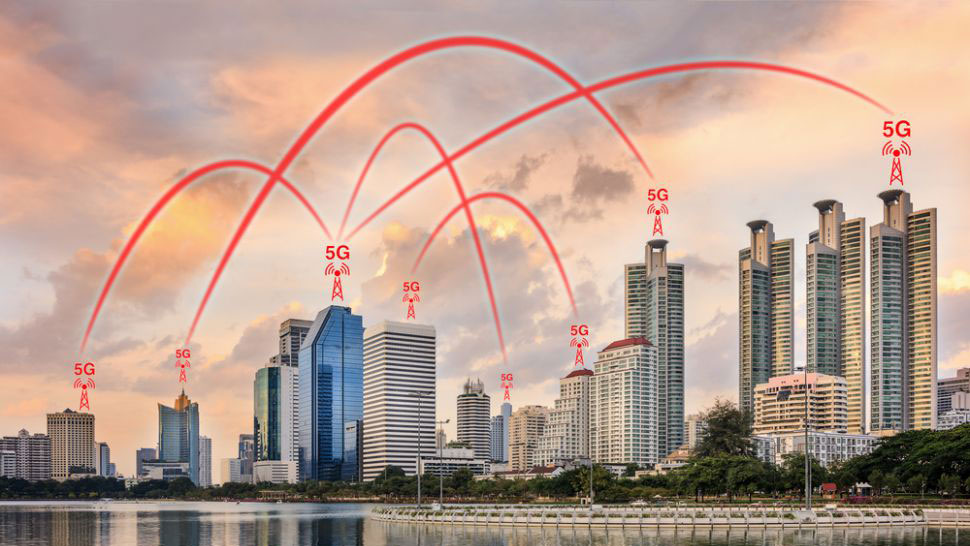Telstra switches on 5G for the Gold Coast, but wider availability remains murky
Optus and Vodafone say there’s a long road ahead

Telstra has taken gold in the race to switch on 5G technology, with Australia’s largest telco announcing that it has turned on its 5G network in some parts of the Gold Coast.
Telstra CEO Andy Penn said that switching on 5G-enabled sites at the Gold Coast will “enable us to test 5G pre-commercial devices in real-world conditions and use unique innovations like our connected car to test our 5G footprint.”
“It also means we can connect compatible commercial 5G devices for customers in 5G areas as they become available,” he added. “Over the coming months we will continue expanding our 5G coverage with plans to roll out to more capital cities, regional centres and other high demand areas.”
By the end of the year, Telstra promises to have 500 such “5G-capable” mobile sites up and running.
The speed bumps along the way
While Australia’s other big telcos are also in the race to switch on their own 5G networks, Optus and Vodafone have admitted that the move to a faster mobile network won’t be an easy task.
According to Vodafone’s general manager of access networks, Tom Joynson, and Optus’ head of mobile network deployment, Lambo Kanagaratnam, 5G coverage won’t be as extensive as customers expect.
The rollout would initially begin in areas where the demand is high – so the bigger cities to begin with – while regional areas would be excluded in the first few years of the switch.
Sign up to the TechRadar Pro newsletter to get all the top news, opinion, features and guidance your business needs to succeed!

They also agree that availability of 5G-enabled handsets might be an issue. With all three major telcos ready to make the switch to 5G technology next year, there’s no guarantee that phone makers will have handsets capable of supporting high speeds in 2019. (The ACCC says that 5G has a maximum speed of a blazing 10,000Mbps, nearly 300 times faster than the average home network.)
Vodafone’s Tom Joyson has also warned of network outages when the move from 4G to 5G is finally made. “We have a live network and we need to keep that network up,” he said. “You take down one of those sites for a day and it has a huge impact. I think that is going to be one of the complications, how the outage looks and how we protect our customers through that.”
High maintenance
Having experienced new network rollouts before, both telco executives are aware that setting up 5G will require plenty of work: it will need constant testing and fine-tuning, and the rollout won’t be cheap.
They agree that 5G networks will need more base stations that will require land to be leased, and more expensive equipment to be purchased. Then there’s the issue of finding sufficient power to make that equipment work.

According to The New Daily, the Australian Radiation Protection and Nuclear Safety Agency (ARPANSA) has called for more research to be conducted on 5G networks.
“For frequencies above 6 GHz where 5G will operate, the electromagnetic energy is not absorbed by the body and the energy causes heating at or near the surface of the skin,” the agency's health services assistant director Dr Ken Karipidis told The New Daily.
He added that “although no health effects are expected from exposure to 5G, ARPANSA has recommended more research focusing on the effects on the skin and cornea, the external part of the eye”.
And while it’s exciting from a consumer perspective to have access to high-speed mobile speeds, the widespread adoption of 5G definitely seems to lie at the end of a long and bumpy road.

While she's happiest with a camera in her hand, Sharmishta's main priority is being TechRadar's APAC Managing Editor, looking after the day-to-day functioning of the Australian, New Zealand and Singapore editions of the site, steering everything from news and reviews to ecommerce content like deals and coupon codes. While she loves reviewing cameras and lenses when she can, she's also an avid reader and has become quite the expert on ereaders and E Ink writing tablets, having appeared on Singaporean radio to talk about these underrated devices. Other than her duties at TechRadar, she's also the Managing Editor of the Australian edition of Digital Camera World, and writes for Tom's Guide and T3.